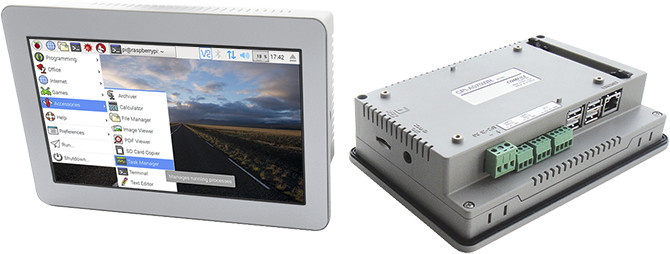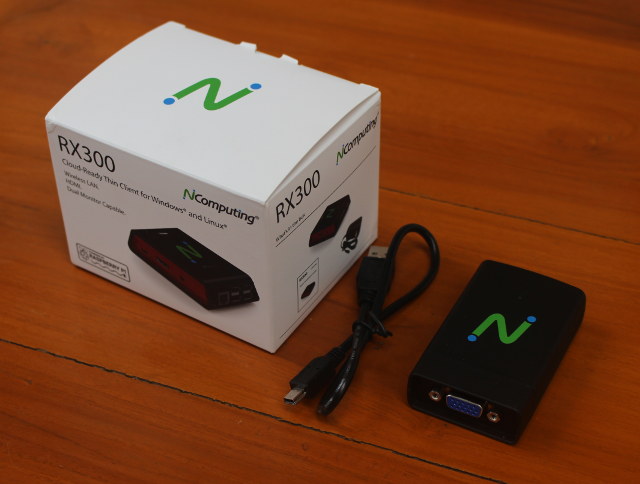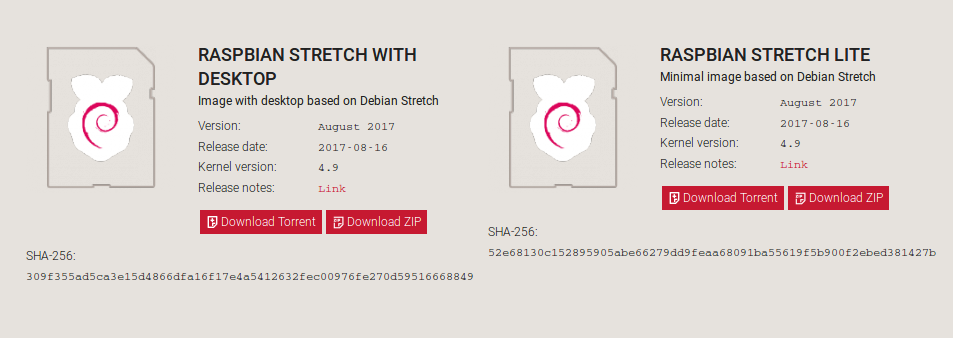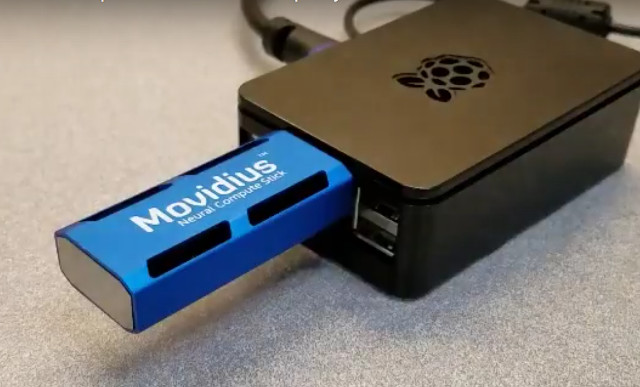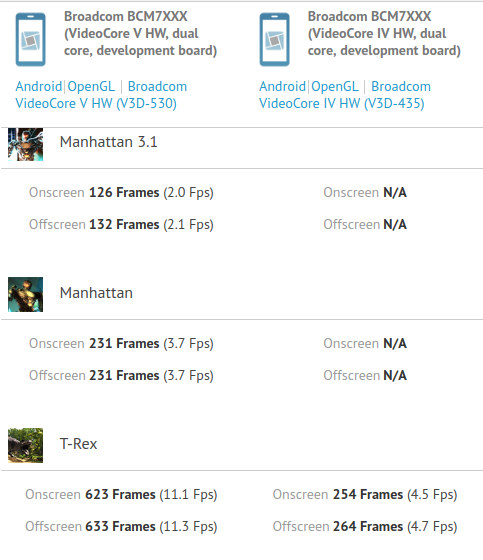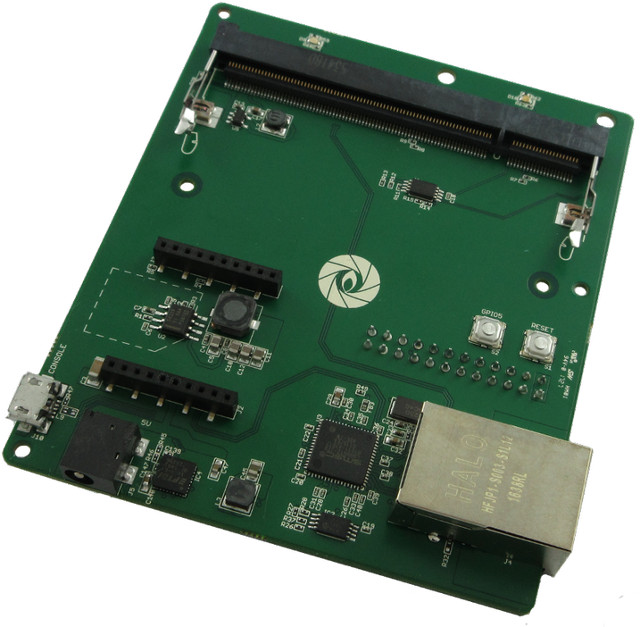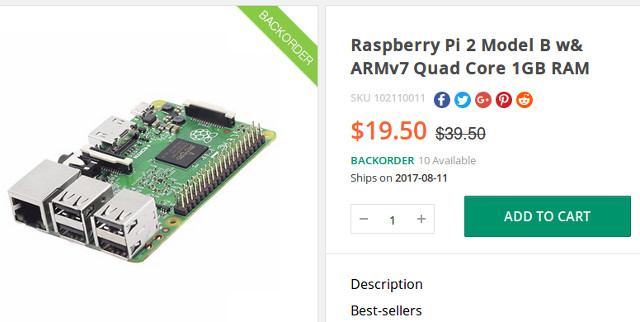ComfilePi CPi-A070WR & CPi-A102WR are industrial IP65 panel PCs powered by Raspberry Pi CM3 compute module, with respectively 7″ and 10.2″ resistive touchscreen displays, and that run modified version of Raspbian OS. ComfilePi CPi touch panel computers specifications: SoC – Broadcom BMC2837 quad core Cortex A53 processor @ up to 1.2GHz with Broadcom VideoCore IV GPU System Memory – 1 GB Storage – 1x micro SD Slot Display 7“ 800×480 Touchscreen Pressure-sensitive (Resistive Film Type) LCD display OR 10.2” 800×480 Touchscreen Pressure-sensitive (Resistive Film Type) LCD display Audio – 3.5mm audio out port I/Os 40-pin header socket based on Raspberry Pi 40-pin header pinout with 22x GPIO with ESD protection circuit 2x RS-232 terminal blocks 1x I2C terminal block USB – 3x USB 2.0 ports Connectivity – 10/100M Ethernet, optional WiFi via USB dongle Misc – 1x Piezzo buzzer Power Supply – 12~24V DC via 3-pin terminal block Dimensions (housing […]
NComputing RX300 Thin Client Review – Part 1: Unboxing and Teardown
NComputing RX300 is a thin client based on Raspberry Pi 3 board that will allow to remotely run Windows and Linux operating systems from a much more powerful server, and Raspberry Pi 3 mostly handling the display, and connection to hardware like USB keyboard and mouse. The company has me sent a review sample for evaluation, and I’ll start by checking out what I received, and the hardware design of the device. NComputing RX300 Thin Client Unboxing I was asked whether I could test dual display, and then I had to choose between a VGA adapter or a DVI adapter. I selected the former, and I received both RX300 thin client, and a USB to VGA secondary adapter with its USB cable. We’ll find the thin client, a 5.1V/2.5A power adapter with a US plug adapter, and a multi-language quick installation guide in the package. The enclosure is really cute, and […]
Raspbian for Raspberry Pi Boards Gets Upgraded to Debian Stretch
While Raspberry Pi boards support many different operating systems, Raspbian is by far the most popular option, and in the last two years the distribution was based on Jessie (Debian 8), the Raspberry Pi foundation has just announced it was now replaced by an update to Stretch (Debian 9). The Jessie version is completely gone from Raspbian Download page, and you’ll only be offered to download “Raspbian Stretch with Desktop” or “Raspbian Stretch Lite”. So what has changed compared to Jessie? Debian 9 changelog will list the main differences compared to Debian 8, but some modifications have also been made in Raspbian itself: Version 3.0.1 of Sonic Pi “Live Coding Music Synth” app – See changelog Chrome 60 stable with improved memory usage and more efficient code Bluetooth audio is supported by the bluez-alsa package by default instead of PulseAudio Better handling of “non-pi users”, as previously many applications assumed […]
Movidius Neural Compute Stick Shown to Boost Deep Learning Performance by about 3 Times on Raspberry Pi 3 Board
Intel recently launched Movidius Neural Compute Stick (MvNCS)for low power USB based deep learning applications such as object recognition, and after some initial confusions, we could confirm the Neural stick could also be used on ARM based platforms such as the Raspberry Pi 3. Kochi Nakamura, who wrote the code for GPU accelerated object recognition on the Raspberry Pi 3 board, got hold of one sample in order to compare the performance between GPU and MvNCS acceleration. His first attempt was quite confusing as with GoogLeNet, Raspberry Pi 3 + MvNCS achieved an average inference time of about 560ms, against 320 ms while using VideoCore IV GPU in RPi3 board. But then it was discovered that the “stream_infer.py” demo would only use one core out of the 12 VLIW 128-bit vector SHAVE processors in Intel’s Movidius Myriad 2 VPU, and after enabling all those 12 cores instead of just one, […]
Work on VideoCore V GPU Drivers Could Pave the Way for Raspberry Pi 4 Board
I’ve come across an article on Phoronix this morning, about VideoCore IV GPU used in Broadcom BCM283x “Raspberry Pi” processors, but part of the post also mentioned work related to VC5 drivers for the next generation VideoCore V GPU, written by Eric Anholt, working for Broadcom, and in charge of the open source code related to VideoCore IV GPU for Raspberry Pi. This led me Eric’s blog “This Week in VC4/VC5” and articles such as “2017-07-10: vc5, raspbian performance“, where he explains he committed Mesa drivers for VC5. I’ve just pushed a “vc5” branch to my Mesa tree (https://github.com/anholt/mesa/commits/vc5). This is the culmination of a couple of months of work on building a new driver for Broadcom’s V3D 3.3. V3D 3.3 is a GLES3.1 part, though I’m nowhere near conformance yet. This driver is for BCM7268, a set-top-box SOC that boots an upstream Linux kernel. I’m really excited to be […]
Gumstix Pi Conduit Gateway Board Leverages Raspberry Pi Compute Module, Off-the-Shelf LoRa and Cellular Modules
Gumstix has designed Pi Conduit Gateway baseboard for both the Raspberry Pi Compute Module and RisingRF RHF0M301 LoRa gateway module, in order to create a Linux based LoRa gateway that can optionally support LTE or other cellular connectivity via NimbeLink Skywire cellular modem. Conduit Pi LoRa Gateway board specifications: 200-pin SO-DIMM connector for Raspberry Pi Compute Module / Raspberry Pi 3 Compute Module (CM3 / CM3L) Headers for RisingRF RHF0M301 LoRa Module NimbeLink Skywire 2G/3G/4G cellular modem connector Low profile 10/100M Ethernet jack (implemented via USB 2.0) USB – 1x micro USB port for debugging via an FTDI USB to TTL chip Misc – User (GPIO5) and reset buttons Power Supply – 5V via power barrel The board was designed using Geppetto, which means you should be able to customize it to your needs by modifying it the original design in a web browser, and order your brand new custom […]
Intel’s Movidius Neural Compute Stick Supports Raspberry Pi 3 Board
Last month, Intel introduced Movidius Neural Computer Stick to accelerate applications such as object recognition, and do so offline, i.e. without the cloud, and at low power. While there was not that much information available at the time, the minimal requirements for the host machine were that it had to be a x86_64 computer running Ubuntu 16.04, and come with at least 1GB RAM, and 4GB storage. So I understood the stick would only work attached with 64-bit Intel or AMD processors, and ARM development boards would not be an option. But today, I’ve found that Movidius had uploaded a new video showing a Python based object recognition demo with the Neural Compute Stick connected to the the Raspberry Pi 3 board. You just need to add a USB camera, copy ncapi directory from the SDK installed on your Ubuntu 16.04 development machine to the Debian Jessie installed on RPi 3 […]
Buy Raspberry Pi 2 Board for Just $19.50 (Promo)
With the launch of Raspberry Pi 3 last year, there has been much less interest in the Raspberry Pi 2 board, especially since there has not been any official price cut. But Seeed Studio has an interesting promotion right now where the company sells the Raspberry Pi 2 board for just $19.50, or $20 off the normal price on their website. That price does not include shipping, but this can apparently be combined with TENOFFSHIP coupon to bring the total price with shipping to Germany to $21.66. If the same laws are still in place, it’s below the 22 Euros limit in Europe, meaning you won’t need to pay for VAT or customs duties on the board. You need to use the coupon before July 31, midnight (GMT+8), so there are only a few hours left. The main downside is that only 10 are available on backorder with shipping scheduled […]


